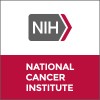Fenretinide in Treating Children With Recurrent or Resistant Neuroblastoma
Recurrent Neuroblastoma

About this trial
This is an interventional treatment trial for Recurrent Neuroblastoma
Eligibility Criteria
Inclusion Criteria: Diagnosis of recurrent or resistant/refractory high-risk neuroblastoma by one or both of the following: Histological confirmation Demonstration of tumor cells in bone marrow with increased urinary catecholamines Stratum I: At least 1 unidimensionally measurable lesion* At least 20 mm by MRI and/or CT scan OR at least 10 mm by spiral CT scan Stratum II: Meets one or both of the following criteria: At least 1 site with positive uptake on meta-iodobenzylguanidine (MIBG) I 123 scan Tumor in bilateral bone marrow aspirate/biopsy by routine morphology (no NSE staining only) Stratum III: At least 5 tumor cells/10^6 mononuclear cells in the bone marrow by immunocytology only (on 2 successive bone marrows performed from 1 day to 4 weeks apart) Patients in first response (i.e., patients with persistent tumor at end of frontline therapy, but who have never had disease relapse or progression) must have histological* or morphological (by bone marrow) confirmation** of viable tumor on CT scan, MRI, or MIBG scan after completion of myeloablative therapy (for strata I and II) No catecholamine elevation only Performance status - 0-2 At least 2 months Hemoglobin greater than 7.5 g/dL (transfusion allowed) Bilirubin no greater than 1.5 times normal SGPT and SGOT less than 2.5 times normal Creatinine normal for age No hematuria or proteinuria greater than 1+ on urinalysis Calcium less than 11.6 mg/dL Triglycerides less than 300 mg/dL Not pregnant Negative pregnancy test Fertile patients must use effective contraception No seizure disorders unless on anticonvulsants and well controlled No skin toxicity greater than grade 1 Must be able to consume entire intact study capsule in the dosage prescribed for body surface area Recovered from prior immunotherapy At least 7 days since prior anticancer biologic therapy At least 2 days since prior growth factors Prior autologous stem cell transplantation allowed No prior allogeneic stem cell transplantation No concurrent immunomodulating agents At least 2 weeks since prior myelosuppressive chemotherapy (4 weeks for nitrosoureas) and recovered No concurrent anticancer chemotherapy No concurrent steroids Recovered from prior radiotherapy At least 4 weeks since prior radiotherapy to target lesion Prior radiotherapy to non target lesions allowed No concurrent radiotherapy to sole measurable lesion for symptom relief Concurrent palliative radiotherapy to non target or localized painful lesions allowed Prior tretinoin or isotretinoin allowed At least 2 weeks since other prior retinoids No prior fenretinide No concurrent supplemental oral or IV vitamin A, ascorbic acid, or vitamin E (except if contained in routine total parenteral nutrition [TPN] vitamin supplements) No concurrent drugs suspected of causing pseudotumor cerebri (e.g., tetracycline, nalidixic acid, nitrofurantoin, phenytoin, sulfonamides, lithium, amiodarone, or vitamin A [except as part of routine TPN supplements]) No other concurrent anticancer agents
Sites / Locations
- Children's Oncology Group
Arms of the Study
Arm 1
Experimental
Treatment (fenretinide)
Patients receive oral fenretinide 3 times daily (or 2 times daily if over 18 years of age) on days 1-7. Treatment repeats every 3 weeks for up to 30 courses in the absence of disease progression or unacceptable toxicity.
Outcomes
Primary Outcome Measures
Secondary Outcome Measures
Full Information
1. Study Identification
2. Study Status
3. Sponsor/Collaborators
4. Oversight
5. Study Description
6. Conditions and Keywords
7. Study Design
8. Arms, Groups, and Interventions
10. Eligibility
12. IPD Sharing Statement
Learn more about this trial
